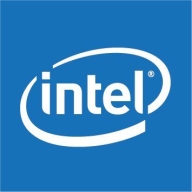

OpenVINO and Openlayer compete in AI and machine learning. Openlayer potentially has the upper hand due to advanced features, while OpenVINO is favored for pricing and customer support.
Features: OpenVINO optimizes for Intel hardware, efficiently manages model inference, and supports a range of neural networks. Openlayer offers powerful data visualization tools, easy integration with multiple data sources, and robust security features.
Ease of Deployment and Customer Service: OpenVINO is streamlined for Intel products with straightforward setup and prompt customer support. Openlayer provides versatile deployment for various environments but may need more configuration. However, its customer service is not as praised as OpenVINO's.
Pricing and ROI: OpenVINO is affordable with cost efficiency and moderate ROI. Openlayer is pricier but offers higher long-term ROI due to its extensive features, appealing to businesses prioritizing comprehensive feature sets over initial costs.

Openlayer is an advanced geospatial data visualization tool designed to help developers integrate interactive maps into their projects, enhancing data presentation.
Openlayer provides developers with a flexible and efficient mapping library that supports vector and raster data, enabling innovative solutions in web-based mapping applications. Its ability to integrate complex datasets, combined with a high-performance rendering engine, empowers users to deliver high-quality map features with ease. It supports multiple projections, making it adaptable to diverse geospatial requirements.
What are the most notable features of Openlayer?In industries like logistics, urban planning, and environmental science, Openlayer enhances decision-making by facilitating the visual representation of complex geospatial data. This tool is often employed in applications ranging from real-time traffic monitoring to detailed land use planning, boosting operational efficiency and data-driven insights.
OpenVINO toolkit quickly deploys applications and solutions that emulate human vision. Based on Convolutional Neural Networks (CNNs), the toolkit extends computer vision (CV) workloads across Intel hardware, maximizing performance. The OpenVINO toolkit includes the Deep Learning Deployment Toolkit (DLDT).
We monitor all AI Development Platforms reviews to prevent fraudulent reviews and keep review quality high. We do not post reviews by company employees or direct competitors. We validate each review for authenticity via cross-reference with LinkedIn, and personal follow-up with the reviewer when necessary.